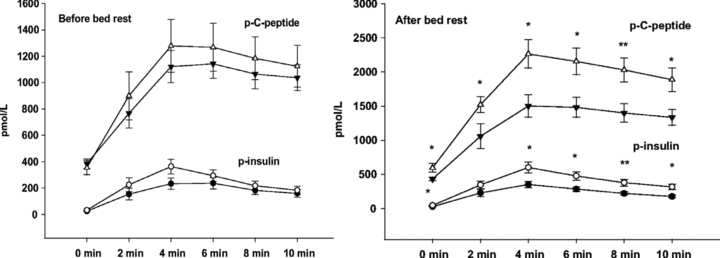Figure 3. Plasma insulin in C peptide levels in subjects who are carriers of the higher risk T-allele (filled symbols) versus low-risk CC genotype (open symbols) of TCF7L2 rs7903146 in response to an i.v. glucose tolerance test before and after bed rest.

Bed rest is associated with the relative insulin resistance in patients with the low-risk CC allele but they can increase their insulin release to compensate for peripheral insulin resistance. By contrast, this response is blunted in high risk individuals who are carriers of the T-allele. This result is an example of the potential power of small and integrative physiology studies to understand how the selected common genetic variants might contribute to the emergence of disease phenotypes in humans. More importantly, these data emphasize that physical inactivity and lifestyle can unmask genetic risks (Figure from Alibegovic et al. 2010. Copyright 2010 American Diabetes Association. From Diabetes, Vol. 59, 2010; 836–843. Reproduced by permission of The American Diabetes Association.)
